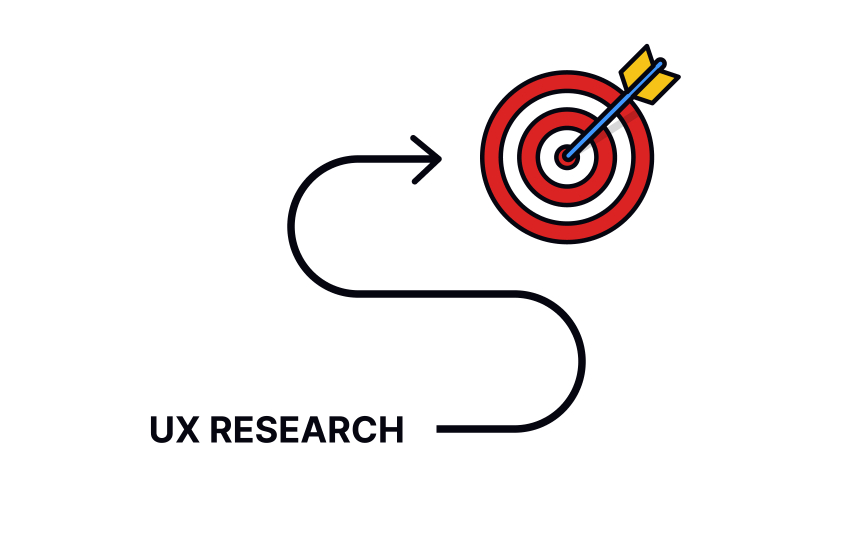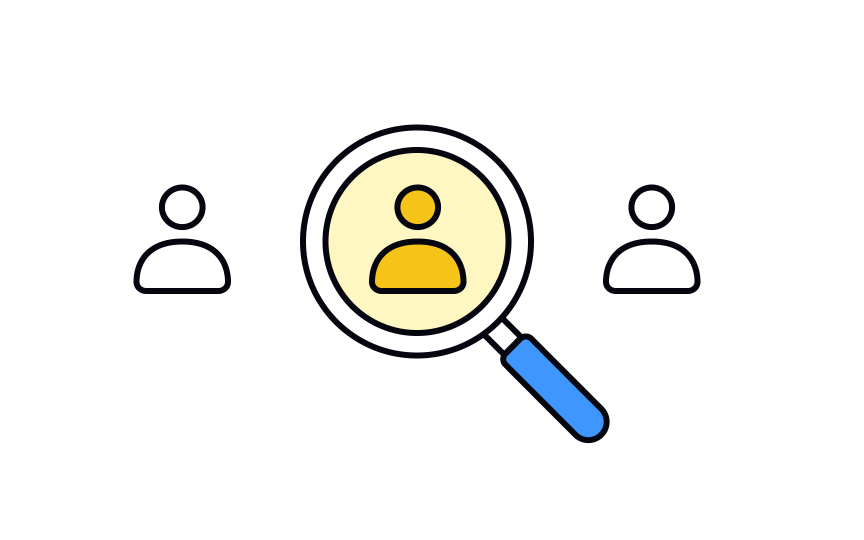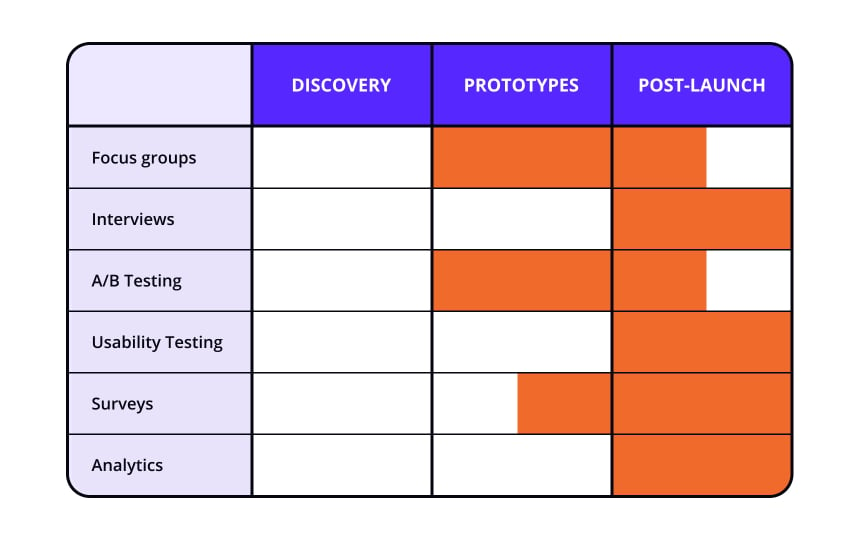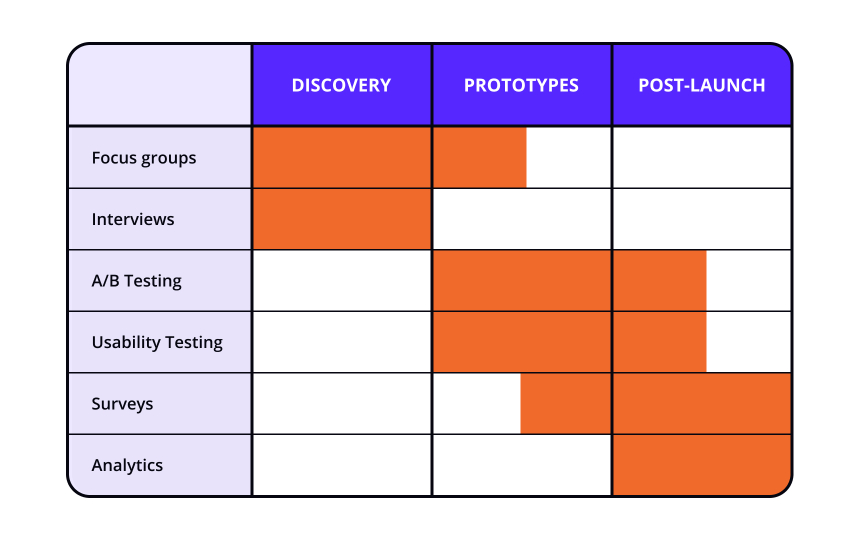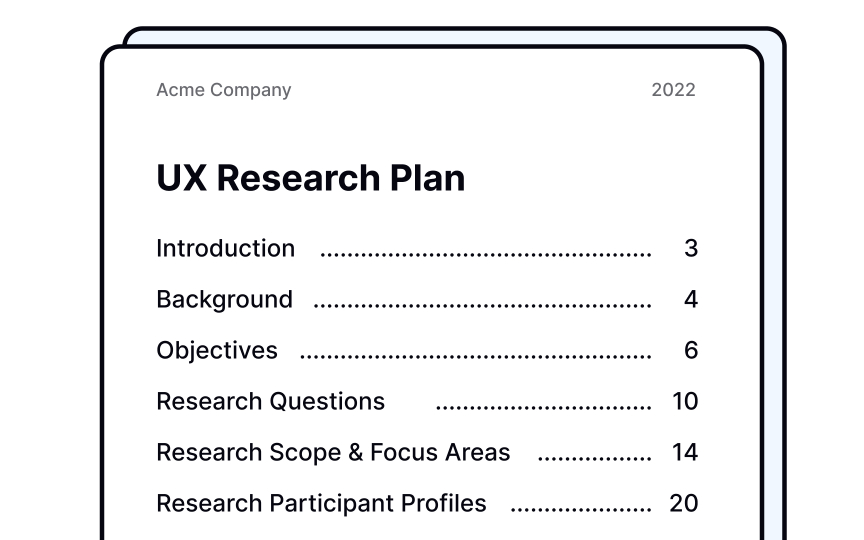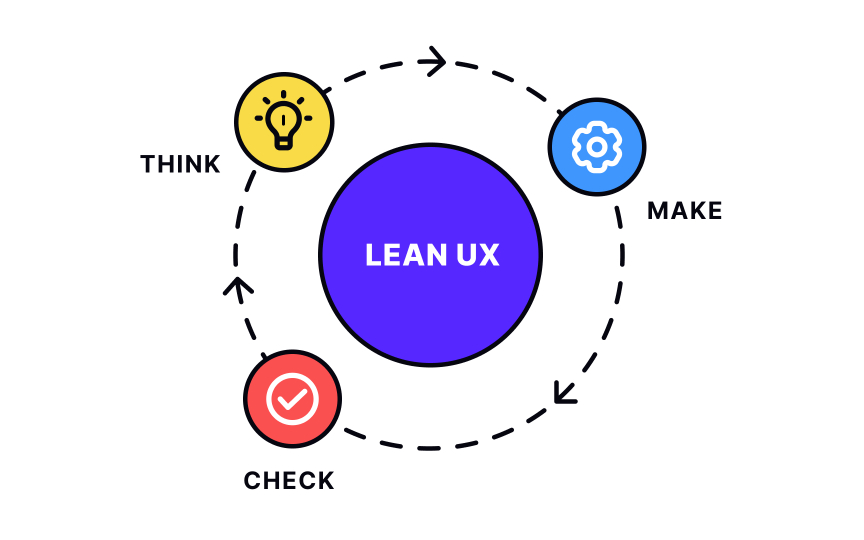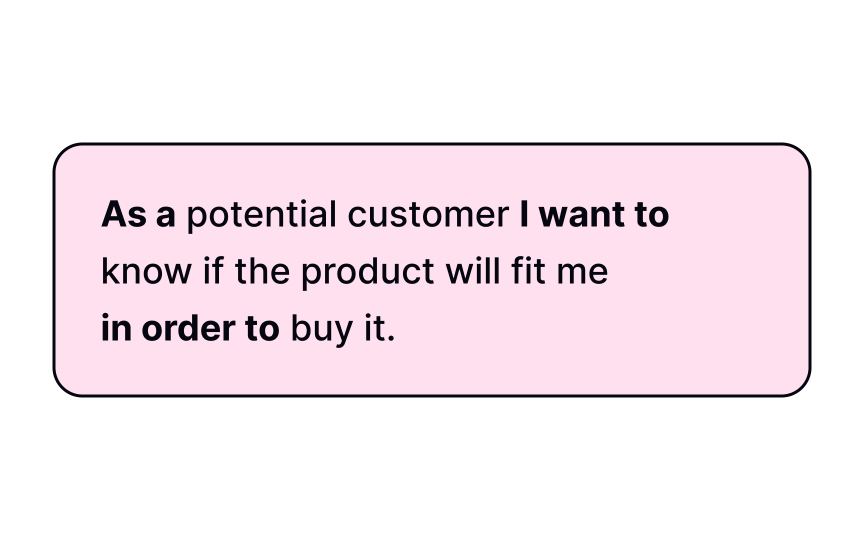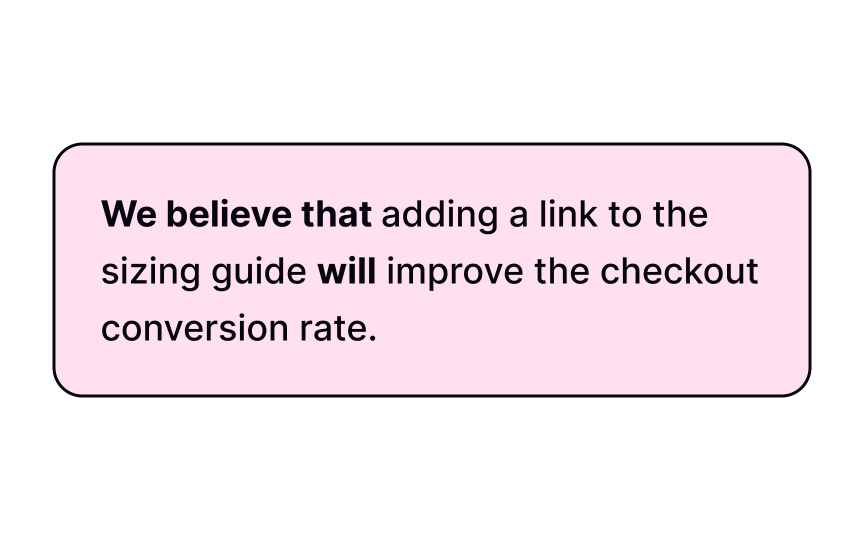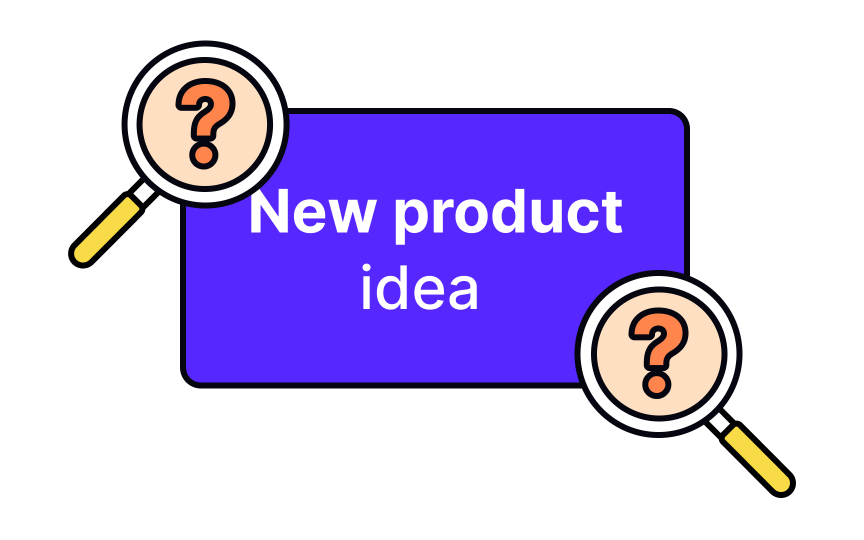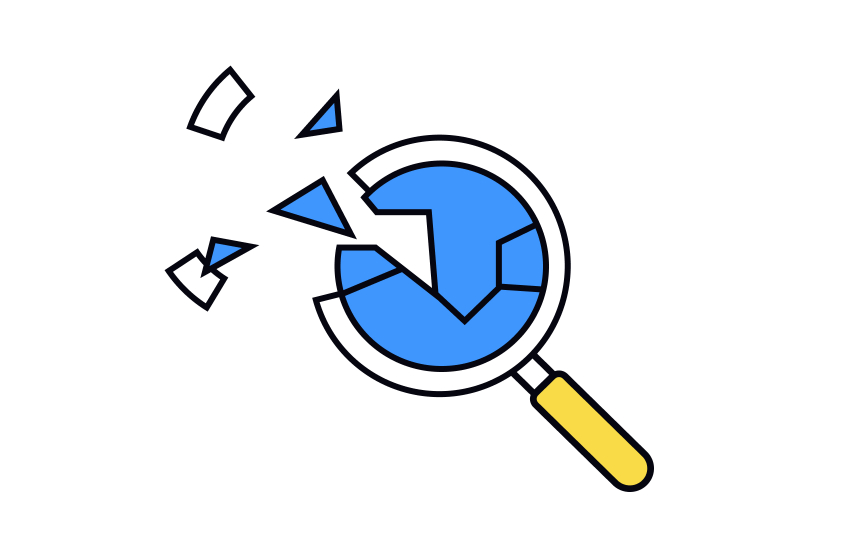UX Research Strategy & Methodology
Discover what goes into setting up a solid UX research strategy to meet your design goals
Companies that invest in UX research strategy consistently see more revenue than those that don't. According to a study by Forrester, every $1 spent on UX will bring from $2 to $100 in return.[1]
Many product teams still choose to forego UX research as they don't see how they can integrate it into their design process. Others wished they had more resources to do research. Developing a UX research strategy can solve both these problems.
Embarking on UX design for business apps without a UX research strategy is similar to driving across the country without a map — you need to have a plan to help you get where you want to be. The good news is that the action that you need to take doesn't need to cost a lot of money or time.
Strategy is the approach you take to achieve a goal.
Many product teams don't do any UX research and rely on their "gut feeling," citing budget and time constraints. Others do surveys and interviews of their co-workers, friends, and family, introducing bias to their findings. Such approaches often result in time and money wasted or a project that doesn't satisfy users.
Having a UX research strategy allows you to create a product that users need and save your team's efforts along the way. UX research strategy helps you:
- Reinforce the importance of research and get stakeholders on board
- Set research goals (are you making a new product or trying to improve an existing one?)
- Account for time and budget for UX research during project planning
- Integrate UX research into your design process
- Decide which research methods should be used at each stage
- Successfully implement your research findings
To build a successful
- Leaders: The people who lead teams that will be affected by the research. For example, the VP of Design might want to know the viability of a new UX flow, or a senior engineer might want to test a new prototype.
- Implementers: The people who will be building the things you learn about through research. For example, a junior engineer who will build a feature or a product designer who will create new designs based on your findings.
- C-level people: High-ranking executives who hold power to authorize or stop the research. They likely have a lot of information on where your company is going and how much money it's willing to spend to get there.
The subject of your research depends on your goals, which could be to:
- Improve a process or workflow
- Better understand customer habits
- Evaluate concepts
- Test usability
- Refine a value proposition[2]
Each reason requires using different
For the
The tests you need to run will differ depending on the stage:
- Discovery: At this stage, you need to learn about the market for your product and its potential users. Consider using methods like generative
interviews , diary studies, ethnography, field studies, and focus groups. - Validation and testing: At this point, you typically have a
prototype to test. The goal now is to understand if your design works for users. Key methods to test this include qualitative usability testing, tree testing, first click testing, task analysis, A/B testing, and accessibility testing. - Post-launch: Once you've launched your product, it's important to keep the research going to ensure that your solution is still working. You can track it with surveys like NPS or your product's analytics.
A UX research plan usually includes:
- Key research goals
- The most important questions you want to answer
- The
research method - The analysis method & research deliverables
- A timeline of when the studies will be executed
Some teams use Gantt charts to create timelines, while others prefer Miro or Figma boards.
After creating the research plan, meeting with your stakeholders and sharing your plan is considered the best practice. This will assure them that you take their needs into account, keep them invested in the outcomes, and get their feedback.[4]
Lean
Lean UX
Some
- Guerilla research: Meet your users in their environment (a cafe, a train station, etc.) to test your prototype.
- Online questionnaires and surveys: Collect information from a broad audience for minimal cost.
- Remote usability sessions: This is a great solution for teams with a limited budget or for testing products whose users are geographically dispersed.[5]
One of the main differences between lean
Lean UX is slightly different because the focus is to improve the product here and now. For example, you've noticed that users of an e-commerce site switch back and forth between the product details page and the basket page to edit their selected size, and many leave the website without purchasing.
Start with a problem statement that follows the pattern: "[A user] needs [need] to accomplish [goal]." For example, "A user needs to understand our shoe size system to buy shoes of the right size."
The next step is to get the team together to brainstorm possible solutions — make assumptions. For example, an assumption might be: "Adding a link to the sizing guide to the product details page will solve sizing uncertainty."
To test this assumption, create a hypothesis. "Adding a link to the sizing guide will increase customers' progress from the basket to checkout." Determine what evidence you need to collect to prove your belief is true and start testing.
Duolingo is an example of successful user onboarding. They employ gradual engagement — postponing registration for as long as possible. This allows users to experience the benefit of the product before registering. The onboarding starts with a trial translation exercise that shows users how quick and easy it is to learn a new language. It ends with a signup form at the moment when users are ready to commit.
- To retain existing customers: Understand where your users get stuck and switch to another brand. This will tell you what you can do differently to meet users' needs and outdo the competition.
- To grow the customer base: Conduct
usability testing to uncover how users interact with the product and identify areas for improvement. Use these insights to optimize features. Additionally, run experiments to test innovative changes or new features that could increase the product's value.
References
- How to Improve Your Projects With Lean User Research | Paul Boag - User Experience Advice
Top contributors
Topics
From Course
Share
Similar lessons

User Research Basics

UX Research Ethics & Biases

